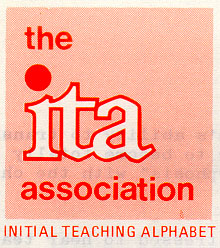



About the records
|
Home Provenance Series List Gallery Index Search |
| Title | Records of The i.t.a. Association |
| Date Range | 1955 - 1992 |
| Creator | The i.t.a. Association (1974 - ) |
| Extent | 4 metres (470 items) |
| Repository | La Trobe Australian Manuscripts Collection, State Library of Victoria |
| Abstract | The i.t.a. Association was established in Australia in 1974 by founding member Arlie B. Hargreaves and under the patronage of Sir George and Lady Paton, to promote the use of the initial teaching alphabet as a medium for the initial learning of reading. |
Administrative Information
The Project was initiated in 1992 by Gavan McCarthy in discussions with Arlie B. Hargreaves, who was storing the records of the i.t.a. Association in her Carlton home at the time. Mrs Hargreaves wrote detailed box lists (see Project File for lists) before the records were transferred to the offices of the Australian Science Archives Project, or ASAP (now Austehc, Australian Science and Technology Heritage Centre) . On this list it was noted that the i.t.a. typewriter and some films remained behind after the rest of the records were transferred. They were subsequently transferred to Austehc and made part of the collection.
The archival work on the records of the i.t.a. Association was completed in 1995, and a printed Guide to the records produced. This was prepared by Gavan McCarthy, Helen Barber and Lisa Cianci with Lisa O'Sullivan. The Guide details Provenance, Series and Inventory data; an Accession was added to an updated HDMS in 2001 by Rachel Tropea at the completion of the Project, and the records were transferred to the State Library of Victoria on 6 June 2002. Please note that since the processors did not have access to an i.t.a. script, many of the i.t.a. book titles will appear 'mispelt' in this Guide according to the practices of the initial teaching alphabet. This being the case, it is always best to consult the records themselves for the correct typography and spelling of such words.
At March 2001, Arlie Hargreaves still retains one folder of 'current' records: correpondence, and papers regarding the money invested with the Teachers' Union.
- The collection is comprised of records from 2 accessions. The codes used to uniquely identify each accession range from ITAA1992/001 to ITAA2001/001.
- The records have been allocated to 10 series. The codes used to uniquely identify each series range from ITAS0001 to ITAS0010.
- Through the processing of the records, 1 provenance entity was identified. The code used to uniquely identify this provenance entity, i.e. records creator or custodian, is ITP0001.
- The inventory covers 470 items, and may include records of continuing value, records sentenced for destruction and records that have been destroyed. The codes used to uniquely identify each inventory item range from ITAA00001 to ITAA00242. The total collection occupies 370 linear cm of shelf space (or its equivalent).
- The documentation of the records at inventory level started on 3 September 1993. The latest additions were made on 22 February 2001. The latest modifications were made on 9 July 2007. This collection profile was updated on 2 September 2008.
Scope and Content
The initial teaching alphabet (i.t.a.) is an 'initial alphabet' for the teaching of reading to beginners. It consists of forty-four symbols which represent the 'forty sounds' of the English language according to Sir James Pitman. The i.t.a. is based on phonetic spelling of words - the theory being that children and beginners can become proficient readers much more quickly by using this medium which doesn't have the complexities and contradictions of the English 'Traditional Orthography' (TO) alphabet. Once proficiency in reading skills is attained, i.t.a. allows the reader to transfer to the TO alphabet.
Arlie Hargreaves was a tutor at the Council of Adult Education (CAE) and Adult Migrant Education Centre (AMES), and a Foundation Member of the i.t.a. Association. She also served as the Honorary Sevretary/Treasurer, and her house was home to the i.t.a. Association.
The records in this collection document the establishment of the initial teaching alphabet in Australia, and its introduction into schools, and the many initiatives of the i.t.a. Association. Of note are papers relating to an important visit to Australia by Sir James Pitman (inventor of the initial teaching alphabet), the trial of the i.t.a. in six schools, and projects such as PALITA, a program for the Aboriginal community using i.t.a., and SIMLIT (Sudan Interior Mission).
The collection comprises correspondence, films, videos, audio tapes, lecture notes, slides, publications, workbooks, manuals, educational aides (e.g. readers), reports, minutes, newsletters and journals, accounts and administrative records, relating to the initial teaching alphabet and the i.t.a. Association, with a date range spanning 1955 to 1995. Except for an i.t.a. typewriter (purchased in 1977, and the only one of its kind in Australia), the material is contained in twenty A1 size and two D PRO size, acid free PRO archive boxes, covering approximately three and a half metres of shelf space.
The records of the i.t.a. Association are a fascinating and significant example of the turbulent history of reading instruction. Experimentation in several Australian schools, as well as Aboriginal communities, was conducted by the proponents of i.t.a. in a sincere effort to improve literacy in all Australian children.
|
Published by the Australian Science and Technology Heritage Centre on AustehcWeb, November 2001
Listed by Helen Barber, Lisa Cianci, Gavan McCarthy, Lisa O'Sullivan and Rachel Tropea HTML edition Updated 2 September 2008 http://www.austehc.unimelb.edu.au/guides/itaa/about.htm The template for this finding aid is part of the Heritage Documentation Management System |
[ Top of Page | Home | Series | Provenance | Search | Index ] |